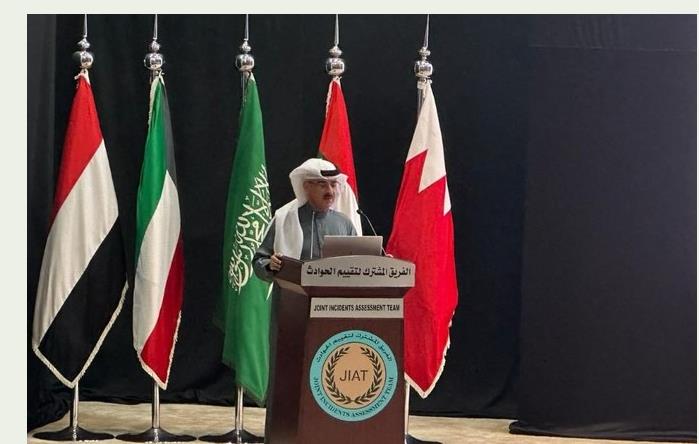
Joint Incident Assessment Team (JIAT) in Yemen refuted nine allegations the group had received from international organizations claiming coalition forces bombed buildings, schools and civilian sites, stating that all these allegations were absolutely untrue.
JIAT Spokesman, Mansour al-Mansour, said the team received nine cases with two allegations from Human Rights Watch (HRW) and seven from the UN High Commissioner for Human Rights, and that evidence proved that all these allegations were untrue.
The first case was based on a report issued by HRW in April 2015 claiming that a coalition aircraft dropped two bombs on the Ministry of Education in Amran. The first bomb hit a three-family building and the second damaged part of the building. After evaluating all evidence, on Saturday, April 11, coalition forces carried out an air mission on the city of Amran at Camp 310.
Mansour pointed out that the ministry compound was not damaged and the team found that there were no traces of aerial bombardment on this house. The Team validated that the Coalition did not target the house and all measures taken were compatible with international humanitarian law.
In the second case reported by HRW, according to Mansour, the team was told that Coalition Forces bombed the Biopharm factories on January 16, 2016.
The spokesman noted that the third case reported in the annual report of UN High Commissioner for Human Rights indicated that coalition forces carried out an air strike on a civilian vehicle in Taiz on May 17, 2017, killing 16 civilians, including two women and children.
"After investigating the incident, the Yemeni national and the resistance were asked to provide an air support to target a Houthi truck carrying weapons and ammunition in al-Wazaaya in an isolated area," he explained.
The fourth case was also reported by UN High Commissioner claiming the coalition forces conducting air strikes on al-Khamis area in Arhab, Sanaa, killing five civilians. According to the allegation, the first air strike hit the school and the second hit a mosque 50 meters away from the school, and an hour later a third strike targeted a civilian vehicle.
Investigations confirmed that coalition forces did not carry out any air missions in Arhab..
In his report, the High Commissioner also indicated that coalition forces bombed Musab bin Omar school in Lahj killing 10 civilians, including three women and two children. The Joint Team found that the Coalition forces carried out an aerial mission against two targets in Lahj where Houthis are located.
The Team reviewed video recordings and proved that there were no damage to the school and the target was military.
The Spokesman also explained that the annual report of the High Commissioner discussed the bombardment of Baraqash archaeological site in Sanaa, indicating that after verification, the coalition had carried out an aerial mission on a Houthi militias building 66 kilometers from the archaeological site.
The seventh case mentioned by UN High Commissioner for Human Rights reported that six civilians, including three children and three women, were killed, 13 others injured, and 96 houses were damaged as a result of air strikes in al-Amisi neighborhood in Hodeidah.
The Joint Team discredited this allegation saying the coalition forces targeted important leaders of the Republican Guard loyal to the late President Ali Abdullah Saleh inside a building about 1000 meters from the Amisi neighborhood.
Mansour said that the High Commissioner also reported four Coalition air raids on al-Wazir school in Bani Hashim, Sanaa, killing three children.
"After investigating the incident, it turned out that the coalition carried out an air mission on a building, about 1 kilometers away from the school. In addition, satellite images taken four months after the incident showed there were no traces of destruction or damage to the site.
The last case mentioned in UN High Commissioners annual report discussed an attack on al-Fulaihi neighborhood in the Old Sanaa, which is an archaeological site registered in UNESCO.
Mansour concluded that after the investigation, the Coalition forces carried out on the same day an air mission on warehouses and weapons, 4 kilometers from al-Fulaihi, and found no damage to the neighborhood.





